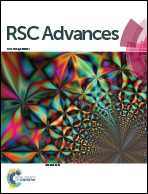Diterpenoids from the shed trunk barks of the endangered plant Pinus dabeshanensis and their PTP1B inhibitory effects†
Abstract
Rare and endangered plants have proven to be better sources for drug discovery than other botanic sources. Pinus dabeshanensis is an endangered plant listed in the China Plant Red Data Book, and has never been phytochemically investigated. In the present study, 11 new (dabeshanensins A–K, 1–11, resp.) and 28 related known naturally occurring diterpenoids were isolated from the shed trunk bark of this plant. The new structures were established by extensive spectroscopic methods and molecular modeling. Among them, dabeshanensin C (3) has an unprecedented bicyclo[3.3.1]nonane ring system (rings B and C) by oxidative cleavage of the C-6/C-7 bond followed by the formation of a new C–C bond between C-6 and C-12. The plausible biosynthetic pathway to 3 is briefly discussed. Dabeshanensins A (1) and J (10), 12-hydroxydehydroabietic acid (33), abieta-8,11,13,15-tetraen-18-oic acid (35), and 15-hydroxy-7-oxo-8,11,13-abietatrien-18-oic acid (37) showed significant inhibitory effects against the human protein tyrosine phosphatase 1B (PTP1B) enzyme, a key target for the treatment of type-II diabetes and obesity, with IC50 values ranging from 5.4 to 50.9 μM.


 Please wait while we load your content...
Please wait while we load your content...